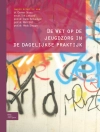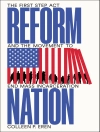This book explores the representation of real-life serial murders as adapted for the screen and popular culture. Bringing together a selection of essays from international scholars,
Serial Killing on Screen: Adaptation, True Crime and Popular Culture examines the ways in which the screen has become a crucial site through which the most troubling of real-life crimes are represented, (re)constructed and made accessible to the public. Situated at the nexus of film and screen studies, theatre studies, cultural studies, criminology and sociology, this interdisciplinary collection raises questions about, and implications for, thinking about the adaptation and representation of true crime in popular culture, and the ideologies at stake in such narratives. It discusses the ways in which the adaptation of real-life serial murder intersects with other markers of cultural identity (gender, race, class, disability), as well as aspects of criminology (offenders, victims, policing, and profiling) and psychology (psychopathy, sociopathy, and paraphilia). This collection is unique in its combined focus on the adaptation of crimes committed by real-life criminal figures who have gained international notoriety for their plural offences, including, for example, Ted Bundy, Ian Brady and Myra Hindley, Aileen Wuornos, Jack the Ripper, and the Zodiac, and for situating the tales of these crimes and their victims’ stories within the field of adaptation studies.
Spis treści
1. Introduction: Screening Serial Murder: Adaptation, True Crime and Popular Culture; (Claire O’Callaghan and Sarah E Fanning).-Section I. Re-viewing Victims: Sex, Gender and Spectacle.- 2. Re-membering “The Five”: Violence, Victims and the Dead Female Body in Neo-Victorian Portrayals of the Whitechapel Murders (Claire O’Callaghan).- 3. ‘It is happening again’: Seriality, Twin Peaks and the Necroaesthetic (Chase Bucklew).- 4. The Diminished Figure of the Serial Killer in A Confession: (Louise Wattis).- 5. Serial Killer ‘monster’ woman (?): Aileen Wuornos on Trial and on Screen (Jo Aldridge).- Section II. Psycho Paths: Re-Creating the Scenes of Crim.- 5. Wolf Creek, Mick Taylor and Australian Horror (Penny Spirou).- 6. A Strange Sort of Comfort: Domestic Architecture, Home-Bodies, and the Nostalgia of Suburban Containment in American Serial Killer Narratives (Brenda S Gardenour Walter).- 7. “Be Careful of Uncle Charlie: The Unsuspecting Serial Killer in Shadow of a Doubt” (Douglas Mac Leod).- 8. See No Evil: Representations of the Moors Murder Case (Ian Cummins, Marian Foley & Martin King).- Section III. Monstrous Makeovers.- 9. The Sexualisation of Serial Killers in Twenty-First Century Film and the #Me Too Movement (Katrina Jan).- 10. The ‘Prison Poet’ on Screen: Jack Unterweger and the Art of Murder (Michael Fuchs).- 11. “Homicidal Hams” and “Psycho Clowns”: Serial Killer Humor in TV Sitcoms and Sketch Comedies (David Scott Diffrient).- 12. ‘Jazz Hands and Strangulation’: Serial Killers in Musicals (Louise Creechan).- Section IV. ‘Based on’: Truth, Authenticity and the Politics of Representation.- 13. Graze Culture and Serial Murder: Brushing up against ‘familiar monsters’ in the wake of 9/11 (Adam Lynes & Craig Kelly).- 14. ‘We’re here for something else’: Mindhunter, Serial Murder and the Reverential (Rachael Collins & Michele Byers).- 15. ‘What follows is basedon actual case files’: Adapting the “Truth” in David Fincher’s Zodiac (Sarah E Fanning).
O autorze
Sarah E. Fanning is Assistant Professor of Drama and Screen Studies and Director of Drama at Mount Allison University, Canada.Claire O’Callaghan is Lecturer in English in the School of Social Sciences and Humanities at Loughborough University, UK.












